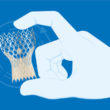During SOLACI-SBHCI 2023, our traditional education program for young interventionists ProEducar Fellows Course was held. Discover the presentations of the prestigious interventionists that made part of this 13th edition here below. Dr. Gustavo Vignolo (UY) – “Trigger: STEMI learning clinical case” PRESENTATION Dr. Roger Renault Godinho (BRA) – “Why and how should I use Radial access? Step by Step” PRESENTATION<a href="https://solaci.org/en/2023/11/10/see-the-presentations-of-the-13th-proeducar-fellows-course/" title="Read more" >...</a>
Is TAVR Beneficial in Cardiogenic Shock?
The presence of cardiogenic shock (CS) in a setting of aortic stenosis ranges from 1% to 4%. The prognosis for this scenario is ominous due to subendocardial ischemia, which presents as a decrease in ventricular preload and an increase in afterload. Aortic valvuloplasty has been used in this context, but, unfortunately, it has been associated<a href="https://solaci.org/en/2023/11/09/is-tavr-beneficial-in-cardiogenic-shock/" title="Read more" >...</a>
Low vs High Dose Drug Coated Balloons in Femoropopliteal Territory
The use of drub coated balloons (DCB) in the treatment of femoropopliteal artery disease has grown. Studies on first generation high dose DCB (HD-DCB) have shown benefits, which has led to their recommendation by current guidelines. However, there have been reports of secondary effects caused by paclitaxel and its excipients. Second generation low dose DCB<a href="https://solaci.org/en/2023/11/02/low-vs-high-dose-drug-coated-balloons-in-femoropopliteal-territory/" title="Read more" >...</a>
TCT 2023 | ISAR-DESIRE 3: 10-Year Results
In-stent restenosis (ISR) remains the primary limitation of percutaneous treatment for coronary artery disease. The strategy to address this limitation involves the use of drug-eluting stents (DES) or drug-coated balloons (DCB), both of which have proven to be effective and safe therapeutic alternatives. Despite current recommendations, treating ISR continues to be a challenge, and clinical<a href="https://solaci.org/en/2023/10/31/tct-2023-isar-desire-3-10-year-results/" title="Read more" >...</a>
Cause of Cardiac Death after TAVR at Present
Cardiac failure (CF) and sudden cardiac death (SCD) stand out as two of the main causes of death in patients with aortic stenosis. Although transcatheter aortic valve intervention has shown higher survival, these two continue to be the main conditions leading to patient death at followup. In its early days, TAVR also showed benefits, but<a href="https://solaci.org/en/2023/10/11/cause-of-cardiac-death-after-tavr-at-present/" title="Read more" >...</a>
TAVR in Asymptomatic or Minimally Symptomatic Patients: 30-Day Results
Aortic valve replacement (AVR) is recommended for symptomatic aortic stenosis (AS), while close monitoring is the advised strategy for asymptomatic patients, unless they have elevated aortic gradients, reduced ejection fraction, or abnormal stress tests. However, the optimal timing for AVR remains uncertain, especially in light of recent evidence suggesting that AS patients showing signs of<a href="https://solaci.org/en/2023/10/06/tavr-in-asymptomatic-or-minimally-symptomatic-patients-30-day-results/" title="Read more" >...</a>
ISCHEMIA Trial: Does Complete Anatomical or Functional Revascularization Modify Anything Compared with Medical Treatment?
Chronic coronary syndrome (CCS) has been considered another comorbidity in previous studies, and there has been no significant reduction in cardiovascular mortality or myocardial infarction (MI) rates with revascularization through percutaneous coronary intervention (PCI) or myocardial revascularization surgery (MRS) compared with optimal medical treatment (OMT). One possible reason for the lack of benefit has been<a href="https://solaci.org/en/2023/09/21/ischemia-trial-does-complete-anatomical-or-functional-revascularization-modify-anything-compared-with-medical-treatment/" title="Read more" >...</a>
BIFURCAT Registry: Long Term Diabetes Impact on Bifurcations PCI Outcomes
The impact of diabetes in patients with coronary artery disease (CAD) are well known, and after percutaneous coronary intervention (PCI), outcomes tend to be less favorable, with higher restenosis rate, repeat myocardial infarction (MI) and stent thrombosis. Despite the development of drug eluting stents, procedures and techniques, treating bifurcation lesions in diabetic patients still show<a href="https://solaci.org/en/2023/09/15/bifurcat-registry-long-term-diabetes-impact-on-bifurcations-pci-outcomes/" title="Read more" >...</a>
OCT-Guided PCTA: Does It Offer any Benefits?
For many years, percutaneous transluminal coronary angioplasty (PCTA) has expanded significantly worldwide. However, despite the demonstrated advantages of intravascular ultrasound (IVUS) in terms of minimal luminal area, reduced cardiovascular events, and restenosis, its use is not very common due to various reasons. On the other hand, optical coherence tomography (OCT) offers even higher resolution than<a href="https://solaci.org/en/2023/09/12/oct-guided-pcta-does-it-offer-any-benefits/" title="Read more" >...</a>
MyVal Device in Non-Calcified Severe Aortic Regurgitation
Due to the proven long-term results and substantial increase in the number of transcatheter aortic valve implantation (TAVI) procedures conducted, the application of TAVI has been extended to clinical situations outside the original scope, such as non-calcified aortic regurgitation (NCAR). Device placement in these new scenarios entails a technical challenge due to the absence of<a href="https://solaci.org/en/2023/08/23/myval-device-in-non-calcified-severe-aortic-regurgitation/" title="Read more" >...</a>









